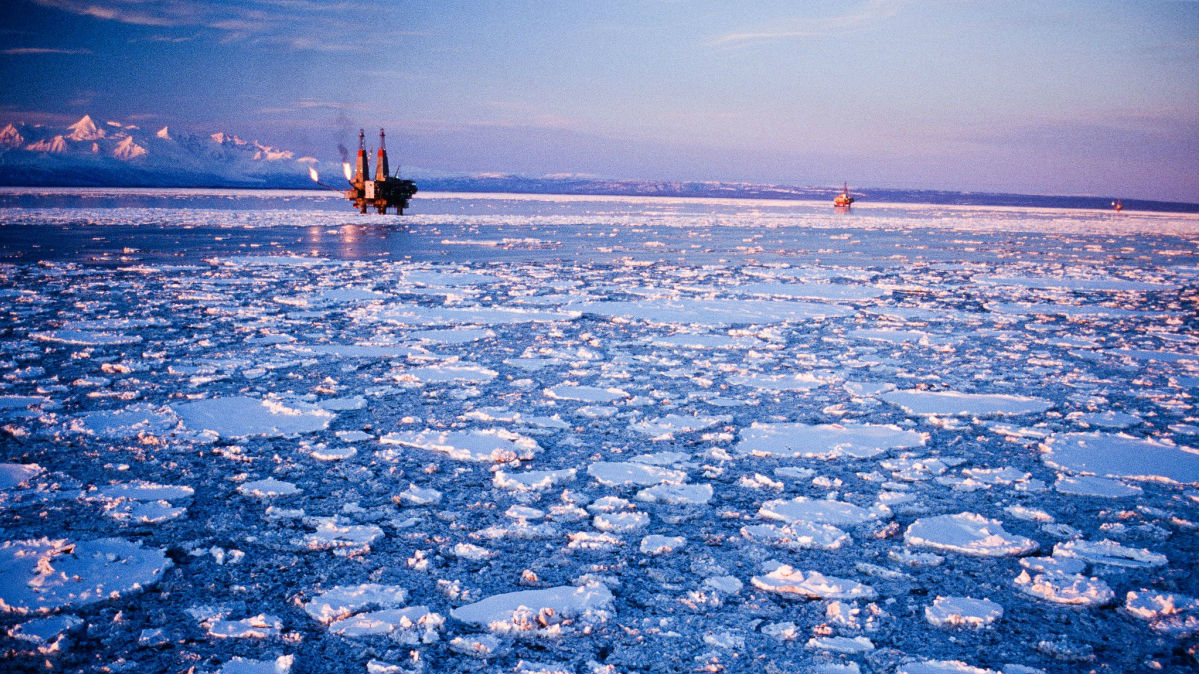Obama's Arctic Decision: Balance?

Earlier this month, the Obama and Trudeau Administrations announced a ban on offshore energy development throughout much of the Arctic. The act was described as “actions ensuring a strong, sustainable and viable Arctic economy and ecosystem, with low-impact shipping, science based management of marine resources and free from the future risks of offshore oil and gas activity.”
However, Alaskan non-profit organization Institute of the North has spoken out on what it believes to be a lack of balance in the decision:
The Institute of the North is committed to advancing Arctic issues related to sustainable development as part of a strategic, inclusive and collaborative approach. These last few years have seen the U.S. work in this manner, with a series of high-level policies, strategies and implementation plans that have tried to frame the critical issues in the Arctic and the U.S. position. During Alaska’s development of its own Arctic Policy, the state worked closely with the White House to see alignment between the state and national efforts.
This level of collaboration went unrecognized, in a lot of ways, but it was encouraging throughout to hear from administration officials a commitment to people in the Arctic, and respect for Alaska’s focus on improving living and economic conditions in the region.
While this last year has seen greater attention to the Arctic than ever before, including a special focus on climate change, the commitments made during the development of the National Strategy for the Arctic Region, the Implementation Plan, and other high level meetings and documents are worth keeping in mind. They provide an important lens through which to view decisions made by the President as he transitions out of office and with a clear drive to leave a legacy.
The Institute of the North highlights these points in regard to the recent Executive Order and related Statement:
1. The U.S. failed to consult with Alaska partners – tribes and the State of Alaska – in the original U.S.-Canada statement, which was clearly prioritized as part of the National Strategy
2. The U.S.-Canada collaboration is important, but just as important as the U.S.-Nordic collaboration that was discussed just weeks after. While the actions from each are not mutually exclusive, neither are they a mandate for any single action. In fact, they could harm the U.S. relationship with Nordic states.
3. The statement notes the engagement of indigenous peoples and northern communities, state, provincial and territorial governments, nongovernmental organizations and businesses in this decision. If that were the case, we wouldn’t see the surprise by each of those in its announcement.
4. While the words “strong, sustainable and viable Arctic economy and ecosystem” seem balanced, the actions – “low-impact shipping, science-based management of marine resources, and free from the future risks of offshore oil and gas activity” – are not. The three taken together are weighted against anything like positive economic development.
5. These actions set the stage for broader conflict with other Arctic nations, as a U.S.-Canada and potentially Sweden bloc form opposed to resource development in the region; Norway and Russia remain adamantly positive toward this development, with Greenland, Iceland and Finland all interested in the corresponding business development.
6. A science-based approach to oil and gas would include a socio-economic impact analysis of the benefits their development, and namely the tax revenue that would accrue to local, state, territorial governments in support of their provision of public services and contributions to education, public safety, power, heat and transportation. Again, it is only part of the science that is being advanced and not a comprehensive or holistic approach.
7. While Canada provided a five-year review, the U.S. did not. There is nothing strategic or thoughtful about a decision that precludes consideration of future shifts in science, public opinion, or community need.
8. Exchanging best practices to strengthen the resilience of Arctic communities is different than making necessary investment toward the resilience of Arctic communities.
9. To that end, citing the pre-existing effort of the Arctic Funders Collaborative falls short of the government's responsibility in addressing those challenges.
10. While Canada is reaching out to northerners to develop a new Arctic Policy Framework, the U.S. says absolutely nothing about shoring up, revising or renegotiating its position with rights holders in the region.
11. While the U.S. is able to identify a route through international waters for low-impact shipping, that has to be negotiated first with Russia and then within the International Maritime Organization, both of whom may not have the same considerations of low-impact. Ultimately, it will not be up to the U.S. to determine this.
12. Canada, on the other hand, is committing to infrastructure, navigational aids and emergency response services, as well as workforce development in the region. The lack of U.S. commitment to any of these is blatant.
Overall, this is a disturbing and challenging effort launched at the last minute and handed off to an incoming administration that will have to start all over in its approach.
The opinions expressed herein are the author's and not necessarily those of The Maritime Executive.
